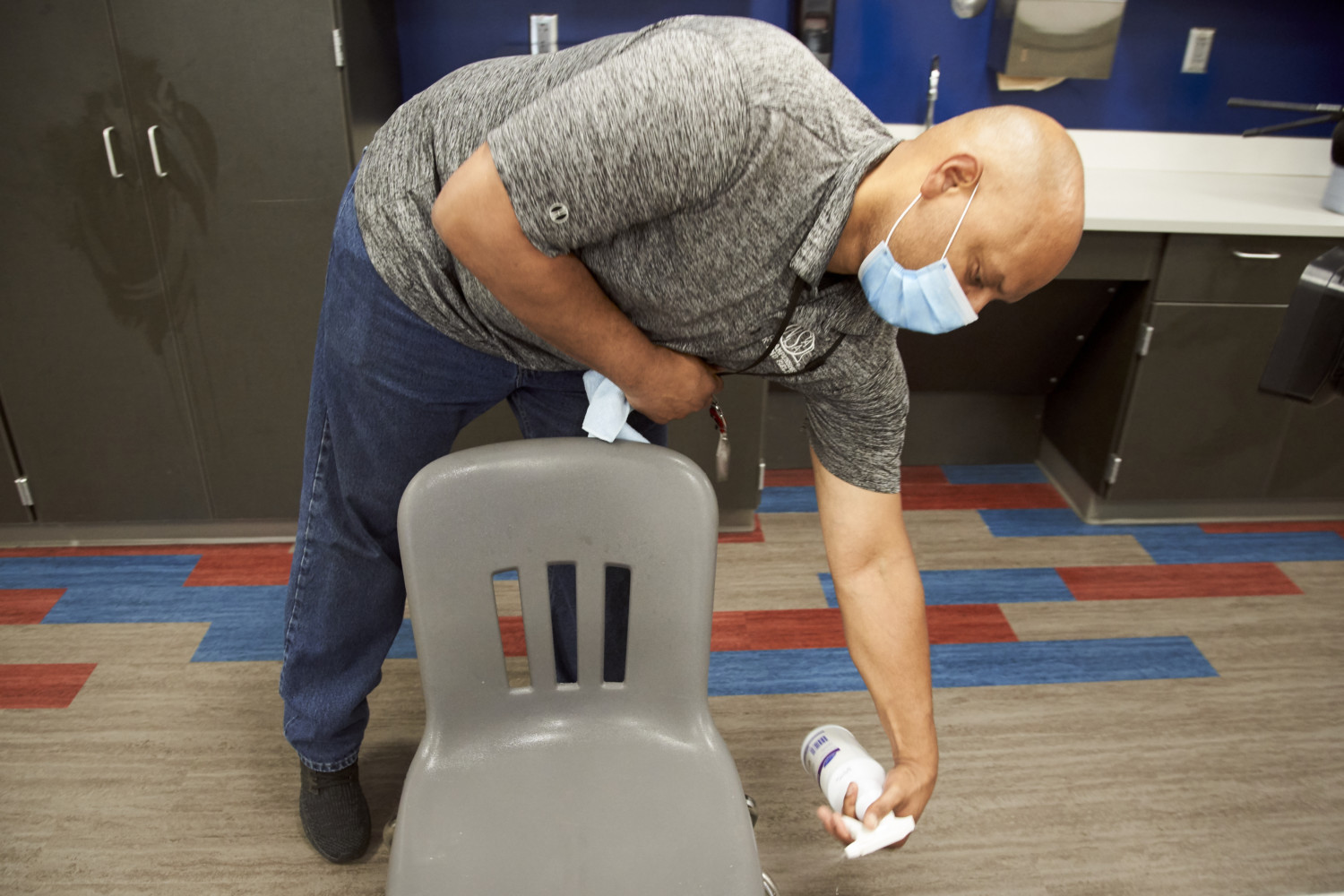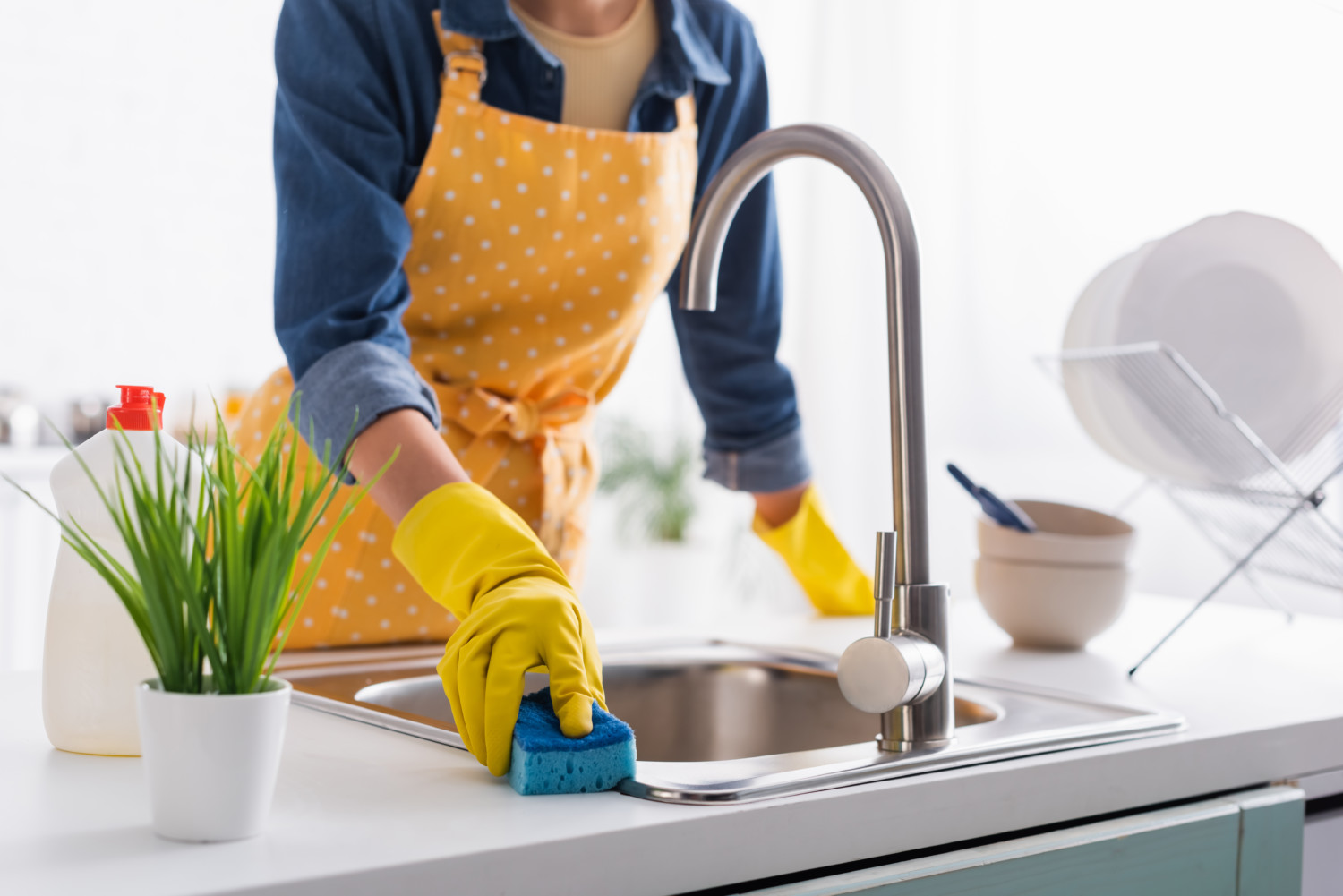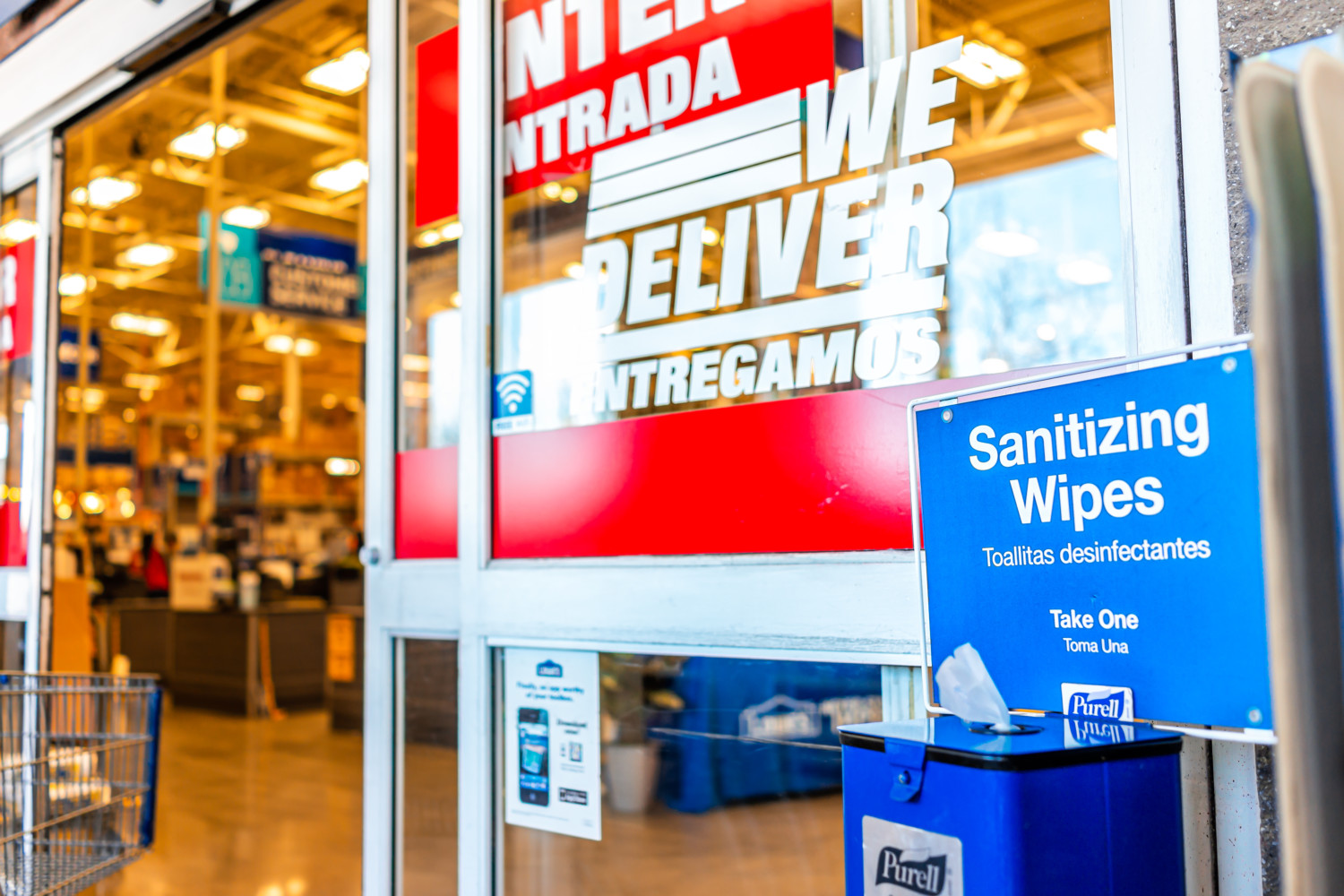The products and services mentioned below were selected independent of sales and advertising. However, Simplemost may receive a small commission from the purchase of any products or services through an affiliate link to the retailer's website.
Cleaning has long been a ritual of human life, but in the past few years, it has become something like a religious practice for many of us.
In the mid-1800s, scientists proved that some diseases could be caused by microorganisms called bacteria, and we’ve been trying to avoid them ever since. That discovery has led to a proliferation of cleaning products that promise to kill germs and keep us healthy. The most common phrases you’ll see on cleaning products are “sanitizing” and “disinfecting.”
We pretty much take them at face value, but what do those words actually mean? And what’s the difference in sanitizing vs. disinfecting? Let’s get down and dirty on this squeaky clean topic.

Cleaning vs. Disinfecting vs. Sanitizing
According to the U.S. Centers for Disease Control and Prevention, there are clear differences between cleaning a surface, disinfecting it and sanitizing it. Many of us might use the terms interchangeably, but the variance comes down to how each method treats the germs on a surface and what exactly it does to that surface.
Cleaning, as you probably guessed, is the least intense of the three methods but is the most common and still takes care of the job of minimizing your contact with harmful bacteria. According to the CDC, cleaning “removes germs, dirt and impurities from surfaces and objects.”
The things needed for simple cleaning include water and either soap or detergent. The CDC says that cleaning “does not necessarily kill germs” but still reduces the risk of spreading infection by lowering their numbers and clearing them away from the surface that’s being cleaned.

Disinfecting a surface, meanwhile, means using a product that kills the germs present on it. According to the CDC, it involves the use of chemicals that kill germs, rather than just wiping them away. Clorox, a leading brand in the disinfectant market, cites the federal government in saying that only products marked as “disinfectants” are approved by the Environmental Protection Agency to kill germs and viruses that cause illnesses, including the flu and COVID-19.
When trying to eliminate the germs on a hard, non-porous surface like many countertops or desks, disinfectants are extremely effective. Still, since disinfecting a surface won’t necessarily “clean” it of dirt, oils and other impurities, the EPA recommends cleaning the surface before using a disinfectant for best results.
The agency offers a step-by-step guide on using disinfectants to their full potential.

Finally, the term “sanitizing” means the practice of either cleaning, disinfecting or both until you’ve “lowered the number of germs to a safe level, as judged by public health standards or requirements,” according to the CDC. Schools, businesses and other places have their own requirements for sanitization that they follow each day. Medline Plus, part of the National Library of Medicine, echoes that definition in its own breakdown of disinfecting vs. sanitizing.
Products that are labeled as sanitizers, meanwhile, will kill germs on a surface but are not EPA-approved for killing viruses like disinfectants are. Hand sanitizers, which have become ubiquitous in the wake of the ongoing COVID-19 pandemic, are regulated by the U.S. Food and Drug Administration — rather than the EPA — and work by killing pathogens present on the skin.
Due to their direct contact with your skin, the FDA recommends caution when using hand sanitizers that have been found to contain a toxic substance called methanol. The organization has a list of hundreds of hand sanitizers it urges caution against using on its website. If you stick with the most trusted and common brands, you should be safe.

When to Simply Clean Instead of Disinfecting or Sanitizing
While you may feel the need to break out a disinfecting wipe anytime you clean up your house or workplace, it’s not necessary. According to the CDC, simple cleaning does plenty to remove germs from surfaces and will be sufficient on a daily basis unless someone sick has come into direct contact with them.
The agency recommends using disinfectants in that case, as well as in high-traffic areas, places that are poorly ventilated and places that don’t provide access to hand-washing materials or hand sanitizer. Otherwise, disinfecting on a daily basis is overkill.
Additionally, using hand sanitizer all the time, in place of simply washing your hands with soap and water, is not recommended. The CDC states that soap and water should be used in all cases except before and after visiting a person in a hospital or live-in care facility or in situations where washing your hands isn’t possible. In that case, you should use hand sanitizer that’s at least 60% alcohol and still wash your hands as soon as you have a chance. The agency also says that you should avoid using hand sanitizer if your hands are visibly dirty or greasy.
This story originally appeared on Simplemost. Checkout Simplemost for additional stories.


